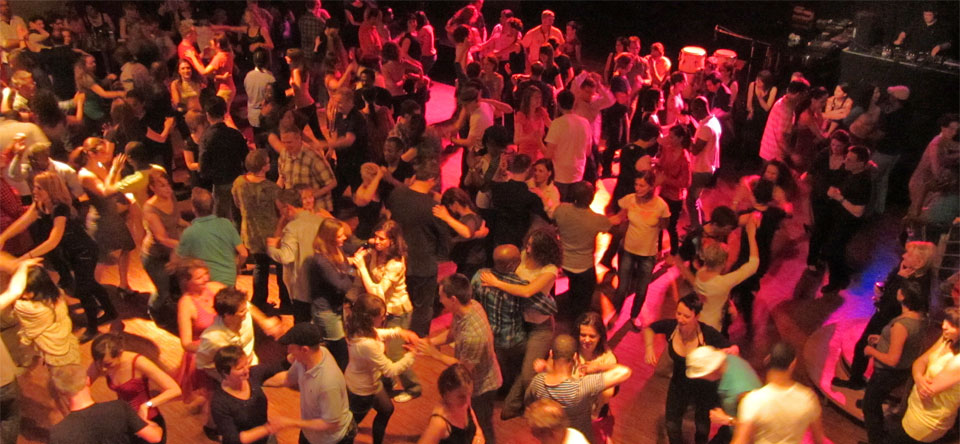Excitement About Dance San Francisco
Wiki Article
The Only Guide to Dance San Francisco
Table of ContentsThe Ultimate Guide To Dance San FranciscoDance San Francisco Things To Know Before You Get ThisAbout Dance San FranciscoExcitement About Dance San FranciscoDance San Francisco - TruthsThe Best Strategy To Use For Dance San FranciscoIndicators on Dance San Francisco You Need To Know
The major difference that distinguishes the Miami-style from various other North American styles is the "Atras" or "Diagonal", back damaging actions performed in reverse diagonally as opposed to relocating forwards and in reverse as seen in the New York design. Dancers do not shift their body weight greatly as seen in various other designs. bay area salsa dancing. Rather, dancers maintain their upper body still, poised and loosened up, concentrating on foot movementA significant difference between Cali Design and Miami-style is the latter is solely danced on the downbeat (On1) and has aspects of sparkles and show-style added to it, complying with collections of North American styles. Miami-style has numerous followers, particularly Cuban-Americans and other Latinos based in South Florida.
Numerous of the moves involve swiftly switching partners. "Rueda de Miami" come from in the 1980s from Miami, is an official design with lots of regulations based on a mix, and is a hybridization of Rueda de Cuba & North American dancing styles, with some routines reflecting American society (e
Coca-Cola, Dedo, Adios) which is not found in discovered traditional Cuban-style Conventional. Cali is also recognized as the "Funding de la Salsa" (Salsa's Resources); due to salsa songs being the primary genre in parties, nightclubs and events in the 21st century.
The aspects of Cali-Style Salsa were highly influenced by dancings to Caribbean rhythms which preceded salsa, such as Pachanga and Boogaloo. Cali has the highest variety of salsa institutions and salsa groups on the planet. A lot of the competitions are kept in Colombia. The central attribute is the footwork which has fast rapid actions and avoiding activities called "repique".
Things about Dance San Francisco
They include different acrobats such as partnered flips to entertain with these jaw going down feats. Their maneuvering is detailed and precise, assisting a number of Colombian Design professional dancers win significant globe champions. Cali hosts numerous yearly salsa events such as the World Salsa Cali Festival and the Encuentro de Melomanos y Coleccionistas.Scientists in the all-natural sciences examined the mathematics of salsa dancing moves. In the social scientific researches, researchers have examined salsa dance to recognize, for instance just how the Latino identity is attached to salsa dance.
Centro Journal. Gotten 2023-05-26. Salsa Vida.
Recovered 5 October 2023. " Background of Salsa Dancing". Salsa Vida. 26 June 2023. Gotten 5 October 2023. Ludovic, Kiss Mihai (2015-10-01). " Salsa Origins and Development". Sporting activity i Societate. 15 (Unique): 120129. ISSN 1582-2168. Djebbari, Elina (2020-01-02). " Dancing salsa in Benin: Linking the Creole Atlantic". Atlantic Researches. 17 (1 ): 110134. doi:10.
Salsa Vida. Movers and Shakers Salsa & Bachata Dance Academy. Spinning Mambo Into Salsa.
The city of music memory: salsa, document grooves, and preferred society in Cali, Colombia. Salsa Vida SF. The Journal of Popular Society.
The 4-Minute Rule for Dance San Francisco
:10. 1002/cb. Journal of Organization Research Study.
Something failed. Wait a moment and try once again Attempt once more.
Some Known Factual Statements About Dance San Francisco
We're speaking regarding the dance, not the scrumptious South American dressing. The beginnings of words "Salsa" as the name of a dancing has actually given debate for decades. One of the most popular (and possibly accepted) concept is that Cuban and Puerto Rican musicians in New york city coined the phrase in New York in the 1970's, to define the spicy blend of songs they were see it here producing out of the rhythms and motifs of Cuban kid montuno, guaracha, chachacha, mambo and bolero.Report this wiki page